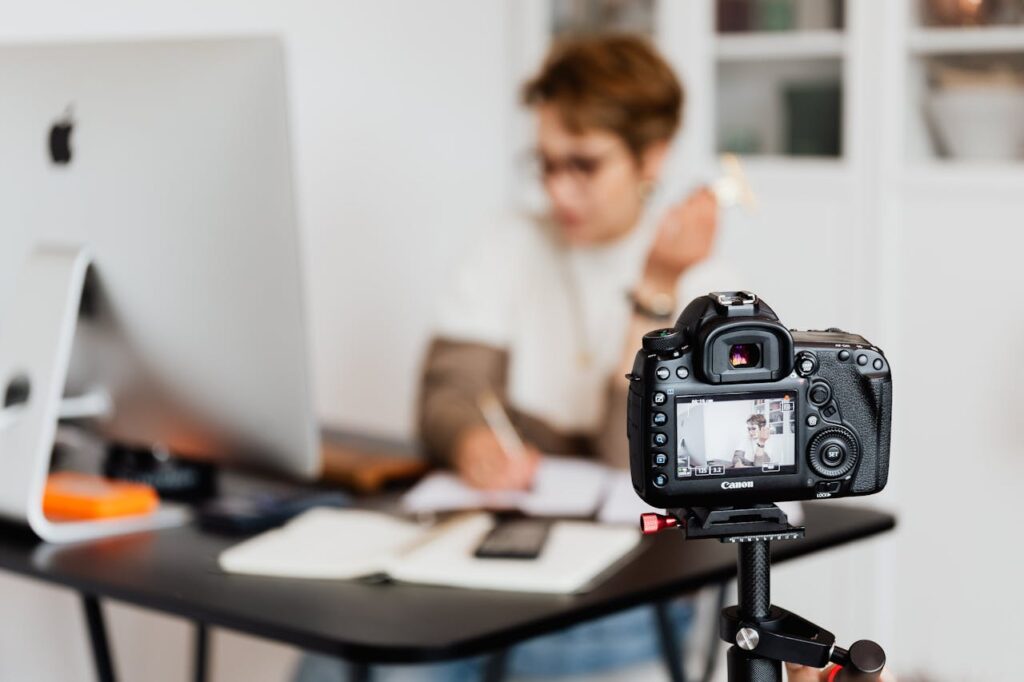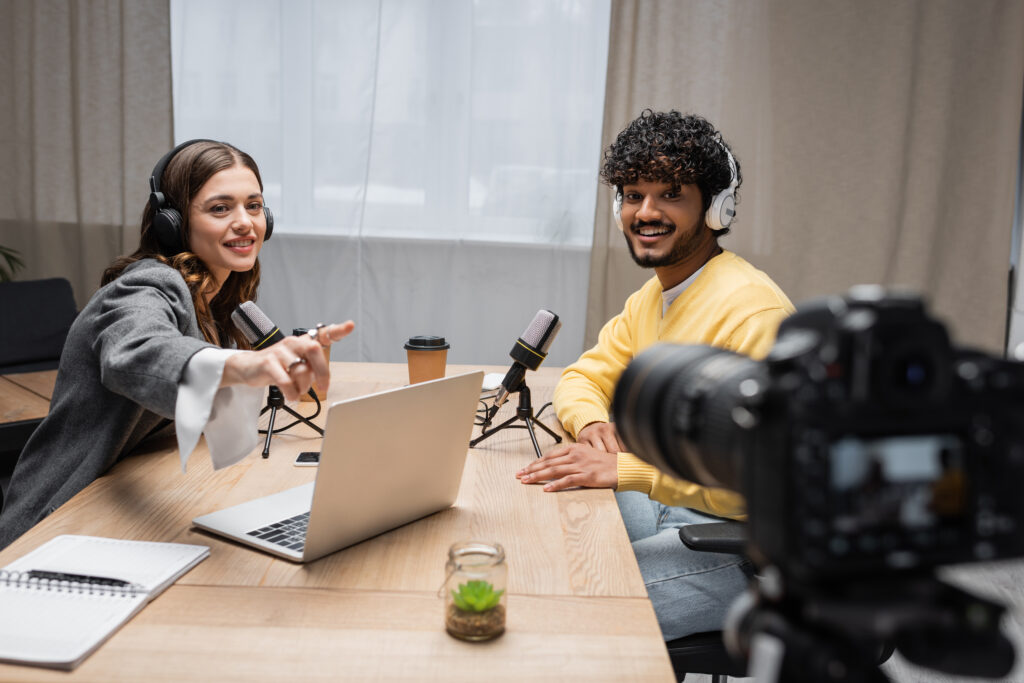Fashion Bloggers & Influencers: The Original Trailblazers of Digital Influence
Before the term “influencer” became a marketing buzzword, before TikTok, Instagram, and brand deals worth millions, there was the fashion blogger. These digital pioneers carved out a space for independent voices in an industry traditionally controlled by magazine editors, runway trends, and luxury brands. They are the original influencers, and their impact on the social media landscape is undeniable.
The Rise of the Fashion Blogger
In the early 2000s, platforms like Blogger, WordPress, and later, Tumblr, became the digital runways where individuals shared their unique style, fashion hauls, and personal takes on the industry. What made these bloggers different from traditional fashion journalists was their relatability. They weren’t bound by industry norms; they were self-made, unfiltered, and directly connected to their growing audiences.
Names like Chiara Ferragni (The Blonde Salad), Aimee Song (Song of Style), and Susie Lau (Style Bubble) turned personal passion projects into global brands. Soon, luxury fashion houses, once skeptical, began inviting them to front-row shows, gifting them exclusive collections, and even offering collaborations. The shift was clear: influence was no longer confined to glossy magazines; it was digital, and it was personal.
The Influence They Wield
Fashion influencers have redefined the way people shop, consume fashion, and engage with brands. They have:
- Democratized Fashion: Before bloggers, fashion was dictated by elite gatekeepers. Today, anyone with a voice and an eye for style can shape trends.
- Transformed Marketing: Fashion brands now dedicate substantial budgets to influencer partnerships, recognizing that a recommendation from a trusted blogger often holds more sway than traditional advertising.
- Empowered Diversity: Many influencers have challenged Eurocentric beauty standards, championing inclusivity, body positivity, and representation for underrepresented communities.
From launching their own fashion lines to partnering with global brands, their entrepreneurial spirit has expanded the industry in ways no one could have predicted.
Little-Known Facts About Fashion Influencers
- Their Reach Rivals Major Fashion Brands: Some top fashion influencers have more followers than the very brands they collaborate with. For instance, Chiara Ferragni has over 29 million Instagram followers—while Chanel’s official page has around 60 million, she still surpasses major brands like Prada, which has approximately 20 million followers.
- They Generate More Engagement: Studies have shown that influencers often generate significantly higher engagement rates than brands. The average engagement rate for a fashion influencer can range from 2% to 6%, whereas brands typically struggle to exceed 1%.
- Influencers Drive Direct Sales: Unlike traditional advertising, influencers often directly drive sales through affiliate links and discount codes. One study found that fashion influencers drive over 70% more engagement for fashion and beauty brands compared to celebrity endorsements.
- They Have More Influence on Young Consumers: Gen Z and Millennials are more likely to trust fashion influencers over traditional advertisements. In fact, over 80% of consumers report making a purchase based on an influencer’s recommendation.
- They Can Launch Their Own Brands with Immediate Success: Fashion influencers like Danielle Bernstein (WeWoreWhat) and Camila Coelho have leveraged their massive audiences to launch their own fashion and beauty lines, often selling out within hours.
- The Sheer Number of Fashion Influencers is Staggering: There are an estimated 300,000 to 500,000 fashion influencers worldwide, ranging from micro-influencers with a few thousand engaged followers to mega-influencers and celebrities with millions. The industry is continuously growing, with fashion content being one of the most popular niches across all social media platforms.
- An Amazingly Diverse & Multi-Generational Industry: Fashion influencers span an incredible range of backgrounds, cultures, and age groups. While many influencers begin their careers in their teens or early twenties, there is a growing number of mature influencers in their 40s, 50s, and even 60s, proving that fashion has no age limit. Influencers represent every gender, ethnicity, body type, and fashion aesthetic, from high fashion to streetwear and sustainable fashion.
The Competitive Yet Expansive Market
Fashion influencing is an incredibly competitive industry, with thousands of new voices trying to break through every day. The saturation of influencers, from micro-influencers to global fashion icons, makes standing out more challenging than ever. However, the sheer size and diversity of the market mean there is still ample opportunity for those with originality, professionalism, and a unique perspective.
Fashion unites people of all backgrounds—fat, thin, Black, white, male, female, straight, gay, and everything in between. This inclusivity has opened doors for influencers who bring fresh voices and perspectives to the industry. Whether through sustainable fashion, gender-neutral styling, luxury aesthetics, or streetwear trends, there is always room for innovators who can carve out a niche and offer something new.
The key to success in this space is authenticity, engagement, and consistency. Those who treat it as a profession rather than a hobby, stay adaptable to trends, and bring a unique point of view continue to thrive despite the growing competition.
The Challenges & Prejudices They Face
Despite their monumental influence, fashion bloggers and influencers face numerous obstacles:
- Credibility Scrutiny: Even today, some sectors of the industry still dismiss influencers as “not real fashion professionals,” despite their undeniable impact.
- Fast-Changing Algorithms: Unlike traditional media outlets, influencers depend on platforms that can change overnight, affecting their reach and income.
- Unrealistic Beauty Standards & Pressure: Many face constant scrutiny over their appearance, often pressured to maintain a curated aesthetic that may not reflect reality.
- Exploitation by Brands: Some brands still expect influencers to work for “exposure” instead of fair compensation, undervaluing their reach and labor.
SMACC’s Guide to Becoming a Fashion Influencer
Recognizing the complexities and challenges of this industry, SMACC is producing a dedicated guide on how to start in the fashion influencer sector. This guide will offer realistic advice on what to expect, what to accept, and how to navigate the landscape successfully. Covering everything from branding, content creation, audience growth, and monetization to handling industry challenges, it will serve as a valuable resource for aspiring influencers. The aim is to set realistic expectations while encouraging success, helping newcomers build sustainable careers in this fast-moving field.
The Heart of the Influencer Community
While new content creators emerge daily in various niches, fashion bloggers remain at the heart of the influencer economy. They set the blueprint for authenticity, personal branding, and community engagement that modern influencers now follow. Their ability to merge storytelling with commerce, aesthetics with relatability, and trends with individuality keeps them relevant despite industry challenges.
Though they may not always receive the recognition they deserve, fashion bloggers and influencers have shaped the digital world as we know it. Their voices continue to inspire millions, proving that while obstacles may come and go, the influence they wield is here to stay.


